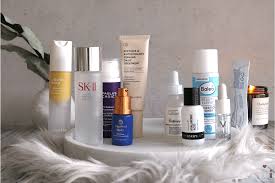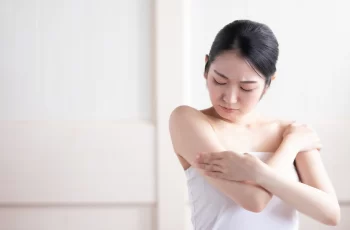How to Tell If an Expensive Product Is Right for Your Skin
There’s a long-standing belief that expensive skincare is more effective than its affordable competitors. But that’s simply not true. No matter what you’re looking for: hydration, oil control, smoothing fine lines, a high price doesn’t always translate into results.
The difference between a product or brand at the bottom of the dollar scale and one at the top end might simply be marketing (how they market themselves) and packaging (how eye-catching their aesthetics are). Cut out all the noise, and the only factor that really determines your buying decision should actually be the effectiveness of the product.
Understand the formula.
To say that skincare labels can be confusing would be an understatement. But what you need to know is that the ingredients are listed in order from highest to lowest concentration. (The more you know, the better you know!) This means that if a really good ingredient is listed at the bottom, your skin won’t absorb as much of it.
So try to look for the ingredient you want/need based on your skin type and concerns (think ceramides! glycerin! peptides! sodium hyaluronate!), and make sure it’s at the beginning, not the end, of the ingredient list. The higher the concentration, the more effective the dose, the better it will be for you and your skin!
It’s worth noting that this decision-making approach also works the other way around. If you know that an ingredient isn’t very effective for your skin and it’s high on a product’s ingredient list, think twice. Ignore the hype and don’t just jump on the bandwagon, now’s the time to seek advice on alternatives that are better suited to you.
Look for evidence.
When skincare brands decide to run clinical trials, it’s because they want to prove that the product actually works. In a clinical setting, clinical technicians monitor and measure changes in each participant’s skin tone over a period of eight weeks. If you’re hesitating between a mask that’s currently trending on TikTok and one that’s been proven to deliver tangible results through successful clinical trials… go with the latter.
It’s also important to distinguish between clinical testing and consumer research. The latter can often be quite distorted, as they rely on volunteers agreeing or disagreeing with a series of statements about sensory appeal – do you like the way it feels? Do you think your skin has improved after using it? The resulting claims aren’t lies, but they’re not scientific truths either. Unlike clinical testing, no measurements (elasticity, pigmentation, etc.) are taken.
Clinical research is especially important when new/unique/trending ingredients are sprinkled throughout the product and packaging as a key selling point. A $300 moisturizer that claims to have anti-aging benefits and has added Wrinkleflickatox™ and Moisturemagic® particles may not fully deliver on its promises if it doesn’t have proven clinical testing to back up that claim. On the other hand, a $100 competitor may have a higher concentration of active ingredients and have clinical testing to prove it. You just have to do your research before adding a product to your cart.
The next time you spend money on a jar of Velvet Cream, first figure out exactly what you’re paying for. Less really can be more.
DQH Can I use salicylic acid first and then vitamin C?
It’s easy to create a skincare routine, but knowing how to use it is another thing entirely. In most cases, if you’re not getting the desired skin results, it could be due to the layering of conflicting ingredients. So, is it possible that salicylic acid and vitamin C are such ingredients? Or are these active ingredients the duo that’s been missing from your skincare routine? If you want answers, stick around because today we are going to explain the benefits of salicylic acid and vitamin C and how they can be used in your daily life.
What are the benefits of salicylic acid for skin?
Salicylic acid is one of the most commonly used beta hydroxy acids and is favored by many people with oily, acne-prone skin. This acid is derived from willow bark, and unlike its water-soluble relatives (called alpha-hydroxy acids), salicylic acid is oil-soluble, which means it can penetrate deeper into the lower layers of the skin. Once it reaches the lower layers, it can help unclog pores of excess sebum, dirt, bacteria, debris, and impurities. This results in clearer skin tones and greater definition.
Not only does salicylic acid benefit the underlying layers, but the outer surface of the skin benefits as well. When applied to the skin, salicylic acid removes the buildup of dead skin cells. This is accomplished by breaking the bonds that hold dead cells to the surface. Over time, this can cause the complexion to look dull and prone to acne, blackheads, and other blemishes.
If you’d like to learn more about salicylic acid and how it can improve your skin, check out this dedicated blog post from a beauty insider.
What are the benefits of vitamin C for skin?
Vitamin C is considered one of the most powerful antioxidants, which means it is very effective at fighting free radicals and preventing them from causing further skin damage. Examples of free radicals include pollution, central heating, UV rays and harsh climate. They attack proteins, fats and cell membranes as soon as they come into contact with the skin, causing signs of premature aging such as fine lines and wrinkles as well as hyperpigmentation, flaky patches of skin and loss of elasticity.
Many people usually prefer to use vitamin C in their morning routine as this ingredient gives the complexion a radiant glow. You’ll also find that vitamin C can target areas of hyperpigmentation, plumping the skin and reducing the appearance of fine lines and wrinkles.
The thing about vitamin C is that there are a lot of outdated studies going back to the 1950s that describe vitamin C as an unstable skin component. Thanks to improvements in modern technology, this is no longer the case as all products now contain a stable form of vitamin C.
Visit The Beauty Insider to learn more about vitamin C. So please check out our blog post.
Can I use salicylic acid first and then vitamin C?
Yes, you absolutely can. In fact, it’s thought that using salicylic acid before using vitamin C ensures it penetrates faster and works faster.
This is an efficient way to utilize two power sources, and the reason has to do with pH. For example, the skin’s natural pH is about 4.7, making it slightly acidic. Salicylic acid and vitamin C are also both acidic, and you’ll find that vitamin C is absorbed quickly into the skin. Therefore, using salicylic acid beforehand can increase the acidity of the skin and allow vitamin C to penetrate into the skin faster.
While this is considered an effective way to combine two powerful ingredients, you need to be aware of your skin type and how it reacts to certain active ingredients. Even people with perfect, normal skin can experience skin sensitivity and irritation. Therefore, always consult a doctor or dermatologist before using any new products on your skin.
It’s also important to follow skin application rules. In this case, you need to use the product correctly to ensure you get the best results for your skin. If you’re not sure what I mean, the basic rule for skin is to start with the thinnest consistency and work your way up to the thickest consistency. This prevents a barrier from forming on the surface, preventing other active ingredients from penetrating the skin.
Can I use salicylic acid at night and vitamin C in the morning?
Yes, absolutely, this is considered the most effective way to get returns without any adverse side effects. This is because there is enough time between applications to ensure that the skin’s pH levels return to balance.
You’ll also find that Vitamin C is rich in antioxidants and is perfect for use in the morning to ensure your skin is protected and looking its healthiest. Due to the small size of salicylic acid molecules, it is an acid that is able to reach the deepest parts of the skin. While this is effective at keeping skin clear, it also increases the risk of irritation and photosensitivity. Therefore, many people prefer to use powerful BHAs in their evening routine without exposure to UV rays, pollution, or harsh weather.
Warning: If you avoid using sunscreen every day, none of these ingredients will do what your skin needs. The combination of chemical peels and powerful ingredients increases the risk of further damage to the skin’s surface. Use SPF 50 every day to keep your skin protected and your lipid barrier healthy, even on cloudy days, keeping your skin in top condition.



